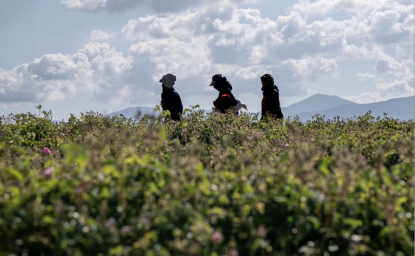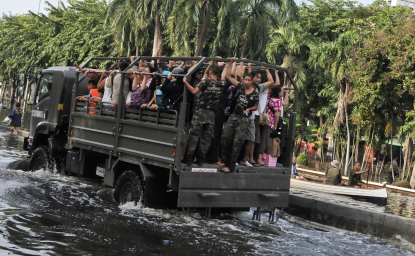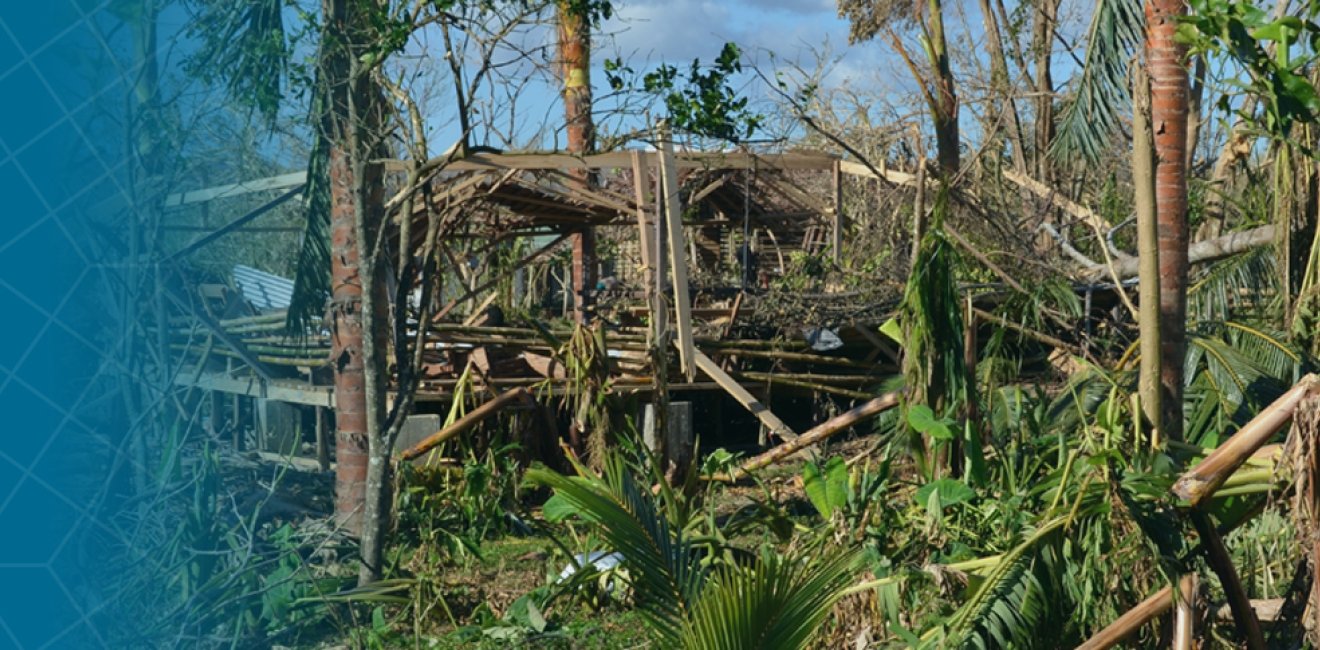As the COVID-19 pandemic was destroying lives and livelihoods across the world, Pacific Island nations faced a catastrophe of a more familiar kind. In April, Cyclone Harold cut a deadly swath through these nations, destroying homes, schools, and hospitals and dealing an additional blow to their efforts to manage the health, social, and economic effects of the pandemic.
These nations, in economic terms, were already some of the world’s most vulnerable—many of them heavily dependent on commodity exports and tourism and short on the fiscal buffers necessary to cope with setbacks. The combined effects of COVID-19 and Cyclone Harold are expected to result in a massive decline in national income in these countries. Disasters on this scale, moreover, tend to leave lasting scars, reducing human capital and lowering productivity for years.
Pacific Island nations are hardly alone in confronting this “double jeopardy”—where climate risks and financial risks amplify one another and create a vicious circle of instability. About a third of countries in East Asia and the Pacific, Latin America and the Caribbean, South Asia, and sub-Saharan Africa face elevated risks from extreme weather—such as floods, storms, and droughts—and from macroeconomic, debt, and banking-sector risks. These cascading risks will further compound existing vulnerabilities, further weakening countries’ abilities to confront climate impacts.
Countries facing this double jeopardy typically have limited means to recover from the physical damage caused by extreme weather events. It is hard for them to promptly mobilize the necessary financial resources because their borrowing costs tend to be relatively high. Economic problems can spill over quickly to the financial system when physical damage reduces property and asset values for businesses and consumers. At the same time, governments attempting to build low-carbon economies must contend with the financial risks associated with changing investor risk assessments and valuations.
Yet there is a way forward for these countries. Governments can build financial resilience and capacity to deal with climate-related risks. In our experience working with developing economies, policies should strive to achieve four goals:
- Strengthen macro-financial resilience. As the public and financial sector play central roles in climate mitigation and adaptation efforts, measures to strengthen macro-financial systems are key for tackling the consequences of climate change. These include macro-economic, fiscal, monetary, and financial sector measures, such as adequate pricing of carbon emissions and well-designed disaster-risk financing strategies.
- Assess and disclose climate-related risks. Climate change poses significant physical and transition risks, but efforts to assess these risks are in their infancy. Data gaps should be addressed, and risks should be transparently disclosed and incorporated into monitoring exercises, including macro-economic and financial stress tests.
- Incorporate impacts of climate change in growth diagnostics. Climate-related risks to economic growth are significantly underestimated. Well-designed adaptation and mitigation efforts can have positive impacts on growth. This points to the importance of reflecting climate-related risks and mitigation and adaptation impacts in the assessment of countries’ growth prospects and the design of growth strategies.
- Promote green finance. Green finance encompasses financial investments that have environmental objectives. Besides enhanced disclosure, green finance requires the development of widely recognized taxonomies, regulatory frameworks, and national strategies. This will create incentives for stakeholders to incorporate climate issues into their risk management and investment approaches, and it can encourage the creation of new financing instruments.
Support from the international community is crucial. The World Bank, together with partners, is working closely with vulnerable countries to address financial risks emanating from natural disasters and climate change. We are also helping clients leverage the power of the financial system to be a force for climate adaptation and mitigation.
Better financial risk management is at the heart of these efforts. The Financial Sector Assessment Program (FSAP), a joint effort of the World Bank and IMF, helps regulators and financial-sector supervisors integrate climate risk into their oversight. These pilot assessments include identifying vulnerabilities with respect to financial-sector soundness and stability; evaluating the supervisory responses of banking, insurance, and capital market regulators; and identifying opportunities for green finance. We have also helped regulators set up stress testing for typhoon risk, and enabled some governments to adopt a similar approach to flood risk.
In developing countries, a lack of well-functioning insurance markets often exacerbates climate risks. Better developed insurance markets can contribute significantly to the resilience of the economy at large and may reduce the government's fiscal burden in rebuilding from a disaster.
Longer-term technical assistance is also important. With the World Bank Group’s private sector arm, IFC, we have started a comprehensive program to help banks and institutional investors in Colombia offer more green financing. The program consists of four components: assessing climate risks in the banking sector; integrating sustainability factors into investment decisions; developing a taxonomy of economic activities; and stakeholder engagement and capacity building.
Dialogue among financial-sector stakeholders can also make a key difference. Central banks and supervisors have joined forces across the globe to address climate related financial risks, as part of the Network for Greening the Financial System (NGFS). We also work closely with the IFC-led Sustainable Banking Network (SBN) and support the Coalition of Finance Ministers for Climate Action.
Over the past decade, the World Bank has provided financing and advisory services to promote financial resilience against natural disasters and crisis risks to over 60 countries, including over US$2.5 billion in contingent lines of credit and US$3.9 billion in market-based catastrophe-risk transactions. Our technical assistance has supported ministries of finance as well as helped financial and insurance regulators develop reliable risk models, and advanced financial analytics and market-based risk financing products needed to better understand, anticipate, and respond to natural disasters, climate change and other complex crises in a timely and cost-efficient manner.
This work fits within a broader agenda for climate change. We believe fiscal-policy measures such as carbon taxation or phasing out fossil-fuel subsidies standards have a key role to play—as do regulatory measures to increase energy efficiency.
These can be politically difficult reforms—requiring citizens to accept short-term pains in return for long-term gains. Yet we must tackle them head on. COVID-19 illustrates the steep costs of complacency. All countries should act now to defuse the double jeopardy of climate and financial risks. It is within our means to shift to a low-carbon economy without creating financial risks.
Author

Environmental Change and Security Program
The Environmental Change and Security Program (ECSP) explores the connections between environmental change, health, and population dynamics and their links to conflict, human insecurity, and foreign policy. Read more

Explore More
Browse Insights & Analysis
Can Climate-Resilient Agriculture Become an Engine for Syria’s Post-Conflict Recovery?

ECSP Weekly Watch | March 10 – 14

ECSP Weekly Watch | February 17 – 21



